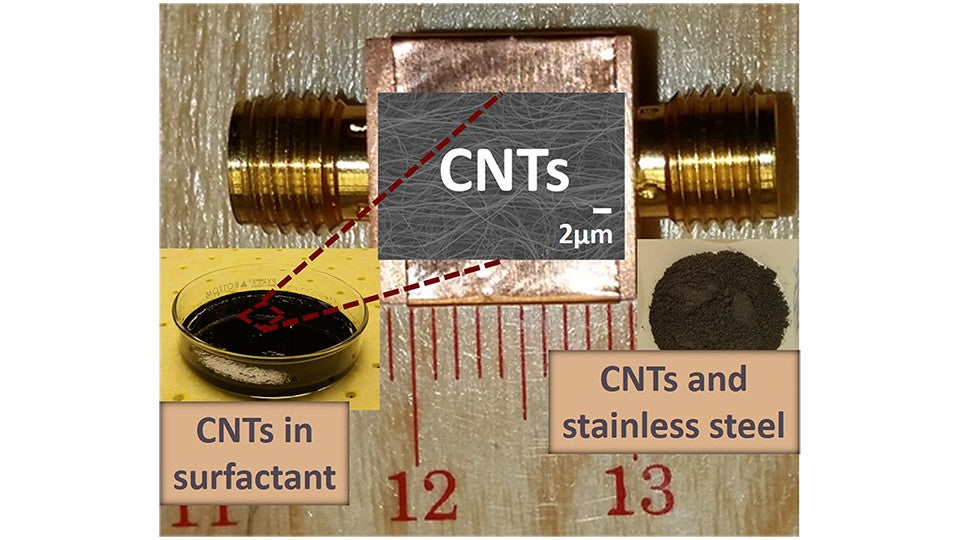A new article introduces a compact, high-performance lossy transmission line filter based on carbon nanotubes that successfullly improve coherence times of superconducting qubit.Superconducting quantum circuits are sensitive to electromagnetic interference and thermal radiation, and such interatctions with the environment lead to the undesirable phenomenon of quantum decoherence. Commercially available filters, such as lumped-element filters and waveguide-based filters, become leaky or simply stop working above certain frequencies. While lossy transmission line filters can successfully attenuate high-frequency radiation, they are bulky in size. As the complexity of quantum circuits grow, packing and cooling down hundreds or thousands of these filters becomes a challenge.
A new article introduces a new type of lossy transmission line filter made with multiwalled carbon nanotubes that improves coherence times while also being more compact in size. The unique physical properties of carbon nanotubes — high optical absorption, excellent thermal conductivity, and high aspect ratio — make them an ideal filter material for superconducting quantum computing applications.
The researchers mixed a solution of carbon nanotubes with stainless steel powder to reduce their attenuation to a desired level. Once the mixture dried in a vacuum, a copper block filter enclosure with a microwave transmission line was filled with the powder and sealed shut.

Source:“Carbon nanotube-based lossy transmission line filter for superconducting qubit measurements” by Christopher M. Wilson, Mehran Vahdani Moghaddam, Chung Wai Sandbo Chang, Ibrahim Nsanzineza, and A.M. Vadiraj, Applied Physics Letters (2019).
Written by Meeri Kim and first published by AIP Publishing.